All About Spider Terrariums

Spiders belong to the category of exotic arthropods that can be kept at home. But in order for the pet itself to be comfortable, you need to create the proper conditions in the terrarium. These include soil, shelter, heating, moisture levels, and some others.
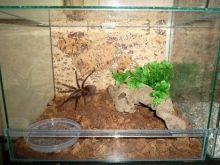
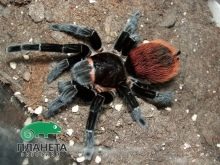
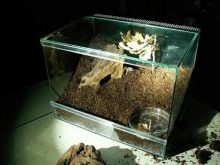
Primary requirements
Before setting up a terrarium, you must first choose the right one. Spiders are of two types: arboreal and terrestrial. For the former, terrariums of a vertical direction are more suitable, and for the latter, a horizontal one. In addition, tree spiders require increased ventilation.
Requirements for the area. The minimum area is the terrarium, which is 2 times the size of the spider itself. You can take a little more, but it is better to refuse from too spacious area, since the insect will feel uncomfortable. Small terrariums are also not quite suitable, since it is inconvenient for the insect to move there. In some cases, the spider can even get injured.
The terrarium must be airtight so that the spider cannot leave it on its own.
It is better to install it in a darkened part of the room, where there is no direct sunlight and drafts. This rule applies to any species of spider: tarantula, tarantula, horse and spider.


Arrangement
After the terrarium and its location have been selected, it is necessary to do further arrangement. It is very important here to choose the right soil, lighting and make a comfortable drinking bowl. Don't forget about the aesthetic appeal by adding the appropriate accessories.
Priming
The soil is needed in the terrarium primarily to maintain moisture.... It is convenient for a spider to move not on a glass surface, but on some kind of substrate. Peat and coconut substrate can be used as filler. Among artificial fillers, the most common is foam rubber, on which small pebbles are poured. It is not recommended to use ordinary soil, sand and sawdust, since the spider in such an environment will not feel very comfortable.
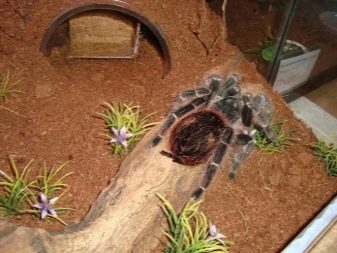
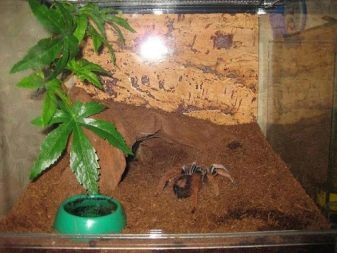
But experts still recommend giving preference to exactly coconut substrate... It can be coarse and fine. This type of filler can be found in pet stores as well as flower supermarkets. It's convenient to use. It is easy to determine the moisture level by the color of the substrate: a light color indicates dryness, and a dark one, on the contrary, indicates excessive moisture.
This substrate is sold in briquettes. In order to use it, you need to separate a small part, soak it in hot water. The wet substrate will slightly increase in size, become soft and moist. But when laying it, you need to squeeze it well so that water does not drip.
The bedding should be placed directly on the bottom of the enclosure. The thickness of the soil should be between 2 and 7 cm, depending on the size of the insect itself.
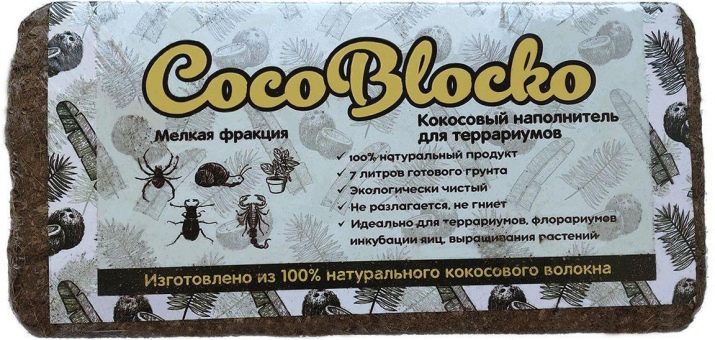
Drinker and shelters
Babies need only the water that gets into the terrarium directly with food. Adults need to install a special drinker. For this purpose, it is permissible to use a small bowl.
In order for it not to fall into the substrate, it is necessary to make a small stand from any solid material.
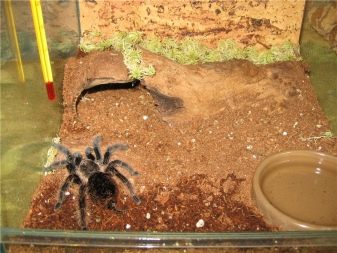
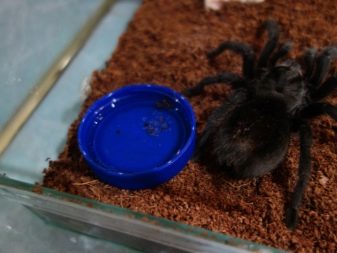
Heating and humidity
The temperature in the terrarium should be between +20 and +22 degrees Celsius. To control temperature and humidity, it is worth installing a small thermometer and hygrometer inside the container. But you can do without special devices, determining the approximate indicators.
Daily heating is not required for the terrarium, as the air temperature is suitable in summer and heating is turned on in winter. Heating is necessary only during the off-season, when the apartment is cold enough.
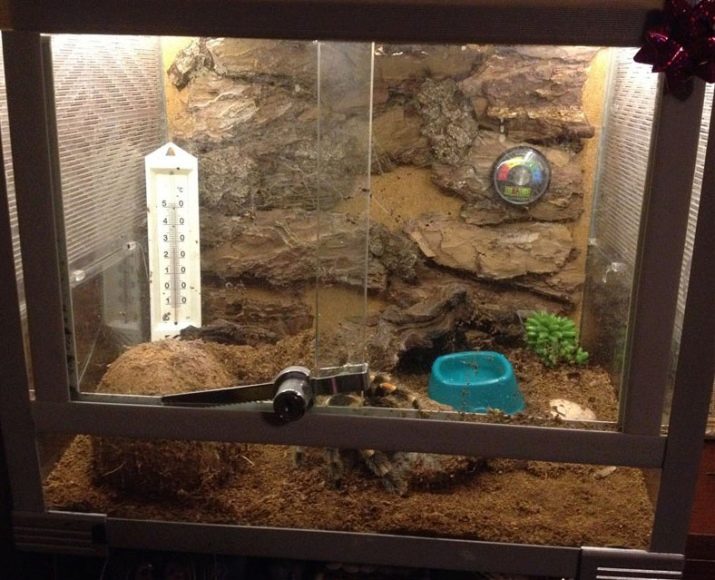
The following are used as heaters:
- thermal cable;
- thermal mat;
- incandescent light bulb (installed outside the terrarium);
- stones and driftwood, under which the insect can hide for the purpose of warming.
The best option would be a thermal mat. It should be half the size of the terrarium itself. This is necessary so that, if necessary, the insect can crawl to both the warm and cold parts of its home.
If the decision is made to install an incandescent lamp, then it must be kept outside the terrarium. Otherwise, the insect can get serious burns. It is also advisable to install a thermostat as an addition.
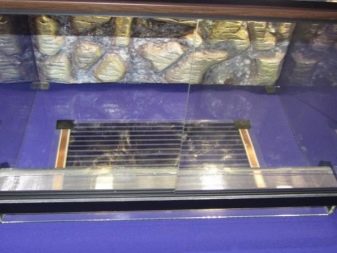
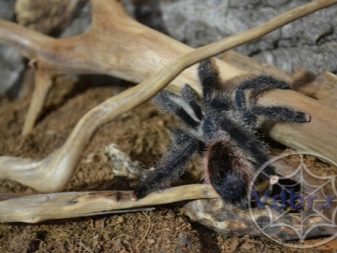
Lighting
Backlighting is optional since almost all spiders are nocturnal. If you still want to install lighting devices, then it is best to use special infrared lamps. Spiders cannot see the light that such devices emit, so it will not interfere with them in any way.
It is better to install any lighting outside the terrarium, since such devices can dry out the air and soil. It is convenient to turn on the lighting in those cases when you want to watch your pet, as well as during cleaning.
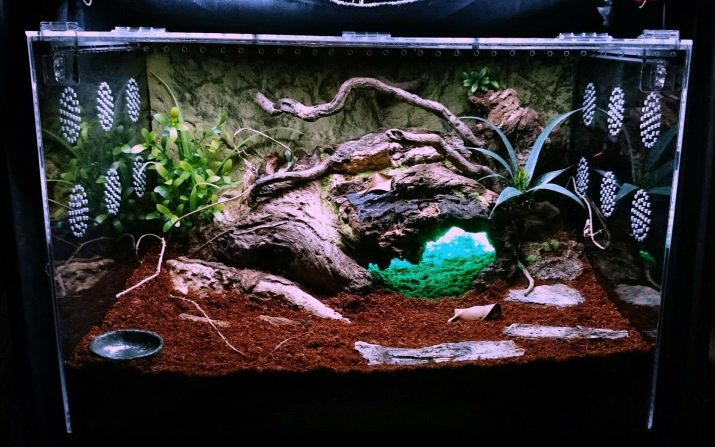
Decorations and decorations
All kinds of decorations and decorations will help to finally equip the terrarium. Here, the design entirely depends on the imagination of the owner of the exotic insect. The most important condition is that all decorative parts must be safe for the inhabitant himself.
Cork bark is ideal as a background. Figures are suitable as decor - for example, it can be glass skulls, stones, driftwood. Tarantula spiders do not need special decorations as they actively weave webs.It will either have to be constantly removed, or the decorative elements will simply not be visible.
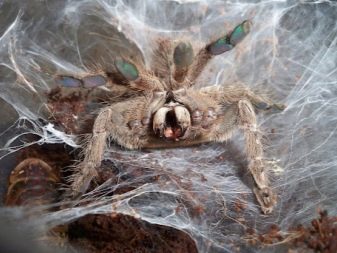
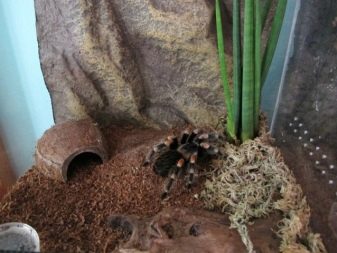
Setting up a terrarium for any type of spider is quite simple. It is only important to comply with the conditions, timely moisten the soil and replace it, as well as do the cleaning. In case of non-observance of these measures, the insect may be lethargic or, conversely, show aggression towards the owner.








